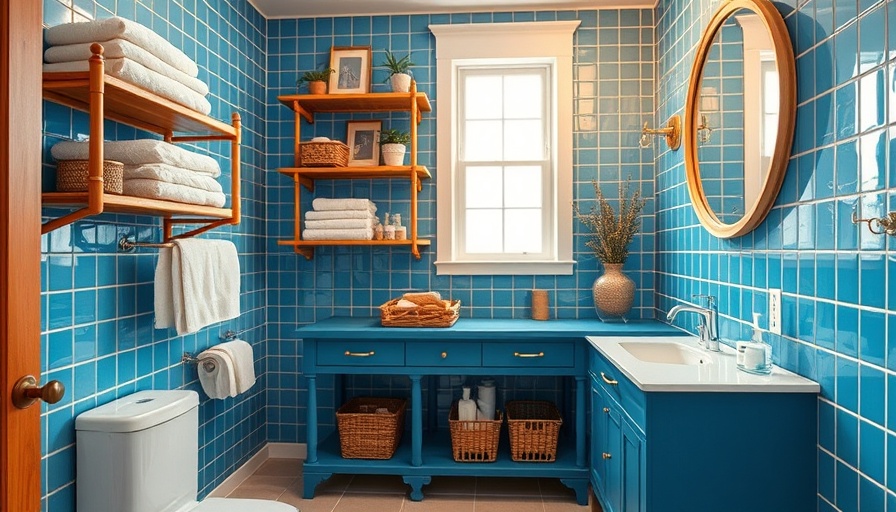
Unlock the Potential: Small Bathroom Storage That Transforms
The bathroom is often one of the most overlooked spaces in a home, yet it plays a crucial role in our daily routines. With the right storage solutions, it can shift from a cluttered, chaotic environment to a serene space that enhances your self-care regimen. Discover practical storage ideas that not only elevate function but also add a touch of aesthetic appeal to your bathroom.
Decluttering: The First Step Towards Organization
Before diving into creative storage solutions, it's essential to tackle clutter. A thorough decluttering session can identify items you truly need and use versus those that have long overstayed their welcome. Start with the medicine cabinet and vanity and gradually work your way to other areas. According to organization experts, taking this step not only simplifies the organization process but also provides clarity and a sense of accomplishment.
Innovative Storage Ideas: Maximize Every Inch
Utilizing smart storage ideas addresses limitations posed by small bathrooms. For instance, consider adding shelves over the toilet, a space often neglected in bathroom designs. This allows you to display decorative items while creating a practical storage solution. Similarly, incorporating a stylish bookshelf can serve dual purposes—both aesthetic and functional—as a repository for toiletries and linens.
Functional Furniture: Combining Style and Utility
Furniture pieces can serve multiple roles in a small bathroom. A rolling cart offers mobility and can hold essentials like towels and toiletries. Some designs even include hooks for hanging items, maximizing vertical space. Also, consider a ladder shelf that can lean against walls to elevate your storage options while adding a touch of design flair.
Drawer Dividers: The Organizational Game-Changer
Professional organizers regularly stress the impact of drawer dividers. Not only do they help keep everyday items like toothbrushes, skincare products, and makeup neatly contained, but they also make it easier to find what you need without rummaging through clutter. A well-maintained drawer saves time and enhances the overall feel of your space.
DIY Solutions: Personalizing Your Storage
If you have a creative streak, consider DIY solutions that not only meet your needs but also reflect your personality. For example, repurposing an old wooden ladder as a towel rack can be a rustic yet trendy addition to your bathroom. Furthermore, consider attaching small magnetic strips to your bathroom wall to hold metal items like tweezers and scissors, keeping them easily accessible.
Potential Challenges: Overcoming Storage Limitations
While the obstacles of a small bathroom might seem daunting, innovative solutions can help overcome these challenges. Identifying 'dead space,' such as the area under the sink or above cabinets, can present opportunities for added storage. The key is in maximizing efficiency—every inch counts. Using custom bins that fit snugly in these spaces can drastically improve organization.
Conclusion: Making Your Small Bathroom Work for You
Ultimately, optimizing small bathroom storage can transform the space into one that both functions well and looks great. Implementing even a few of these tips can lead to significant improvements in organization and aesthetics. Whether through expert advice or personalized DIY projects, the possibilities are endless. Dive into the world of small bathroom storage ideas and make your morning rituals a pleasure rather than a chore.
 Add Row
Add Row  Add
Add 




Write A Comment